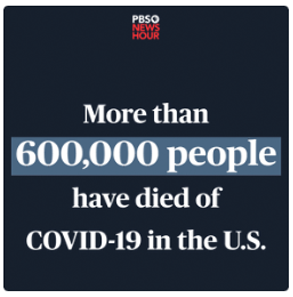Health Plan Weekly
-
Cigna Eases Investor Fears With Better Medical Cost, Membership
Cigna Corp. pleased Wall Street with its first-quarter 2022 financial results, touting a solid increase in commercial self-funded membership and a better-than-projected medical loss ratio (MLR) of 81.5%.
The insurer posted first-quarter 2022 net income of $1.18 billion ($3.68 per share) on revenue of $44.0 billion, up from net income of $1.16 billion ($3.30 per share) on revenue of $40.1 billion for the same period in 2021.
Cigna’s self-funded commercial membership rose 9% to 12.5 million through March 31, while insured commercial membership rose 2% to 2.2 million. In all, Cigna had 17.8 million medical members on March 31, 2022, up about 700,000 or 4% from Dec. 31, 2021, when it stood at 16.7 million.

-
Study: 25% of Medicaid Docs Provide At Least 75% of Care
About a quarter of the practitioners in Medicaid managed care organization networks provide more than three-quarters of the services used by members, according to an article published by researchers affiliated with Yale and Cornell Universities in the journal Health Affairs this month. Experts say that this concentration of care likely limits access to care for members, and health plans need to do more to make sure their networks aren’t made up of so-called “ghost providers.”
The article, which analyzed claims and enrollment data from Kansas, Louisiana, Michigan and Tennessee during 2015-17, found that care delivery is highly concentrated in both primary care and specialists. However, the authors caution that their study of the states “might not generalize nationally” and only studied four specialties.

-
News Briefs: Oscar Leaves Arkansas, Colorado
Oscar Health, Inc. will cease operations in Arkansas and Colorado at the end of this plan year. Chief Financial Officer Scott Blackley defended the decision by saying “they’re really small” markets for the firm in response to a question from Goldman Sachs analyst Nathan Rich during the startup insurer’s latest earnings call, according to the Motley Fool. He added that “they don’t have a significant or even close to material effect [on profits.] There is a benefit though from just reducing…compliance work.” The firm has yet to post a profit, prompting criticism from managed care insiders.
-
Some Insurers May Not Be Ready for Price Transparency Mandates
Insurer price transparency rules are finally starting to come into effect after years of litigation and administrative delays, but it’s not clear whether insurers will be compliant when deadlines arrive. Health care insiders tell AIS Health, a division of MMIT, that larger carriers have an advantage in implementation and smaller insurers may have a more difficult time keeping up.
Federal enforcement of payer price transparency rules by HHS and the departments of Labor and Treasury will begin on July 1 of this year. That deadline, during which plans will need to “make public machine-readable files disclosing in-network rates and out-of-network allowed amounts and billed charges,” per a government document, is the first of many health plan transparency requirements that will come into effect over the next two years.

-
AHIP: States Should ‘Carefully Consider’ Basic Health Program
With millions of people at risk of losing Medicaid coverage once the COVID-19 public health emergency ends, two states are setting up insurance programs designed to scoop up people who make too much for Medicaid and find Affordable Care Act exchange coverage unaffordable.
If Oregon and Kentucky follow through on their plans to set up Basic Health Programs (BHPs), they’ll join just two other states — New York and Minnesota — that have taken advantage of an often-overlooked provision of the ACA, Section 1331. However, there is some evidence that health insurers are wary of BHPs gaining traction.












